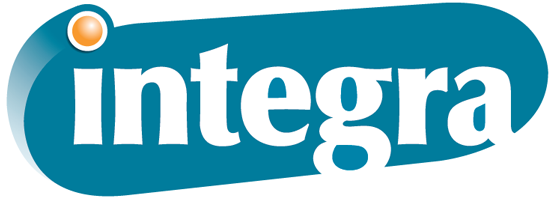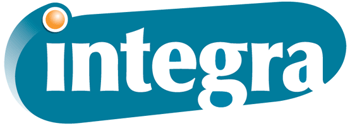Hardcover Book Printing — Everything You Need to Know
May 1st, 2024 | 5 min read

Publishing a hardcover book involves numerous decisions that can significantly affect both the aesthetic and functional aspects of your book. Your choices will impact pricing, timeline and adjustability as well. If you're new to hardcover book printing, these choices and factors may feel overwhelming, but we're here to help you navigate the must-knows.
At Integra Graphics Synergy, we’ve been guiding authors and publishers through the complex landscape of book printing for nearly two decades. This article will help you navigate your choices with confidence if you feel that your book would be best served as a hardcover. We'll answer the following frequently asked questions:
- What are the major differences between hardcover and softcover books?
- What should I consider when deciding on my hardcover book dimensions?
- How will page count affect my hardcover book?
- What choices do I have for hardcover book binding?
- What are the key considerations for short-run vs. long-run book printing?
- What factors affect the cost of hardcover book printing?
- How should I choose a printer for my hardcover book?
With the answers to these questions in hand, you'll be well on your way to a confident decision-making process that perfectly fits your unique publication needs.
1. What Are the Major Differences Between Hardcover and Softcover Books?
The difference between a hardcover and a softcover book is exactly what it sounds like. Hardcover books have a much thicker, sturdier cover that generally extends past the edge of the pages within, whereas softcover books — also known as paperbacks — have a much thinner cover that generally aligns with the edge of the pages within.
When you're choosing between hardcover and softcover, you'll want to consider the longevity and presentation you desire for your book. Hardcovers are durable and lend a sense of prestige, often used for books meant to be kept and cherished for long periods. Hardcover coffee table books are one example.
We've also seen lots of hardcover children's book printing, and it makes sense. Kid's books often take a beating, especially if they're a little one's favorite. The hard cover will stand up to the wear and tear of daily life a little better than a softcover would.
Softcovers, on the other hand, are more cost-effective and suitable for general reading materials that are handled less extensively. You'll see more business trade publications and casual reading materials with paperback covers.
If you're still deciding what type of cover you want for your book, you can check out our article on hardcover vs. softcover books for a more in-depth comparison.
2. What Should I Consider When Deciding on My Hardcover Book Dimensions?
Hardcover books can be produced in various sizes to suit different needs. The most common dimensions are 6" x 9" for standard novels.
For larger formats like hardcover coffee table books, you'll more commonly see 9" x 12" or 10" x 13" sizes. These dimensions can be standard vertical books or oblong, also known as landscape books, with pages being wider than they are tall.
Small hardcover books at a 3" x 5" dimension are more challenging to produce. Some plants can handle them while others do not have the setup or equipment to do so. If you'd like an uncommon or small size for your book, make sure your printer can handle the request, or work with a print broker for access to more equipment and specialties.
3. How Will Page Count Affect My Hardcover Book?
Page count influences the thickness of your book and the type of binding that can be used. Hardcover books require a minimum thickness for the binding process to be effective — typically at least 48 pages. That given average has more to do with the book's thickness than it does its number of pages, so you'll have some wiggle room based on the paper stock you select.
Another factor to keep in mind is that thick hardcover books with a high page count perform much better and last much longer with Smyth-sewn binding, which we'll discuss in the next section.
Understanding the relationship between page count and binding options early on can help you plan the layout and content of your book accordingly.
4. What Choices Do I Have for Hardcover Book Binding?
Hardcover books primarily use case binding, which is durable and allows for various enhancements on the cover like foil stamping and embossing. Common types of hardcover binding include:
- Adhesive case binding: Cost-effective and suitable for general hardcover books with a typical thickness, this process uses book binding glue to adhere the book's pages to its spine.
- Smyth sewn binding: More durable, Smyth sewing allows a hardcover book to lay flat when it's open. It's also a more long-lasting solution that adds stability to the binding, making it the right choice for particularly thick books. If your hardcover book is 400 or more pages, you'll definitely want to choose Smyth sewing.
In many cases, either type of binding will work for your hardcover book. Think about how long you want each copy to last, how much use it will get and what your budget for the project is.
5. What Are the Key Considerations for Short-Run vs. Long-Run Book Printing?
Both options come with their own pros and cons:
- Short-run printing: Short-run printing is ideal for limited editions and test markets, allowing for lower initial investments and flexibility in modifications. This option is perfect if you're testing the market's response to your book and don't know how many will sell. This hardcover book printing has no minimum, but make-ready processes mean you'll pay more per unit the fewer you purchase.
- Long-run printing: Long-run printing is more cost-effective per unit, but it requires a higher upfront investment since you're buying your books in bulk. It's best for books with established demand or larger distribution needs. You'll want to make sure you have a storage, inventory and fulfillment plan for your back-stocked books if you do go with long-run printing.
Speak with your printer before you jump into a project. Some print houses aren't set up for short runs, others don't have long-run capacity and still others can offer both services. You'll want to ask your book publisher the right questions to make sure they're the fit for you.
6. What Factors Affect the Cost of Hardcover Book Printing?
Several factors will impact your book printing costs, including:
- Binding type: Smyth-sewn books are more expensive than those with adhesive binding.
- Page count and book size: Larger books with more pages typically cost more due to the use of more materials. However, specialty printing of extra small hardcover books may cost more than the standard size depending on your printer's capabilities.
- Material choices: Upgrades like book dust jackets, leather covers, foil stamping and premium paper types will increase your costs.
- Print run size: Larger print runs generally lower the cost per unit, making them more economical over time. Short runs, on the other hand, will come with a smaller initial price tag.
- Timeline: You'll want to give your book printer several weeks for your hardcover book publication. Some can offer rush book printing, but it will usually cost you, so your best bet is to plan ahead.
The more precisely you can nail down your budget for this printing beforehand, the easier time you'll have making the above decisions.
7. How Should I Choose a Printer for My Hardcover Book?
Selecting the right printer is crucial. Look for printers with specific experience in hardcover book production.
Before agreeing to anything, ask for samples of their work, check customer testimonials and ensure they can meet your timeline and quality expectations. Discuss all your requirements, including potential future needs, to ensure they can handle both your current and upcoming projects.
To ensure scalability, consider working with a print broker who has experience in book publication and can work with you to find the right vendor for your needs now and later. To learn more, read our article on FAQs about print brokers.
Choose a Hardcover Book Printer and Design Layout That Matches Your Vision
Creating a hardcover book is an exciting journey. You've chosen a design that will add remarkable value and durability to your publication. You may have felt stressed about whether you'd considered all angles before reading this piece. Hopefully, you now have more knowledge and confidence about what you and your team will need to know and decide before your publication date.
With the right information and a trusted printer, you can produce a high-quality hardcover book that meets your vision and exceeds your expectations. Make your own list of these questions, and answer each one before reaching out to book printers near you.
If you've yet to consider a softcover book and think that may be a better option for your project, check out our article answering all the FAQs related to softcover book publication.
For more detailed guidance or to get started with your specific hardcover book printing, connect with us at Integra Graphics Synergy. Click below and let us help you turn your creative vision into a tangible masterpiece.
Topics:


